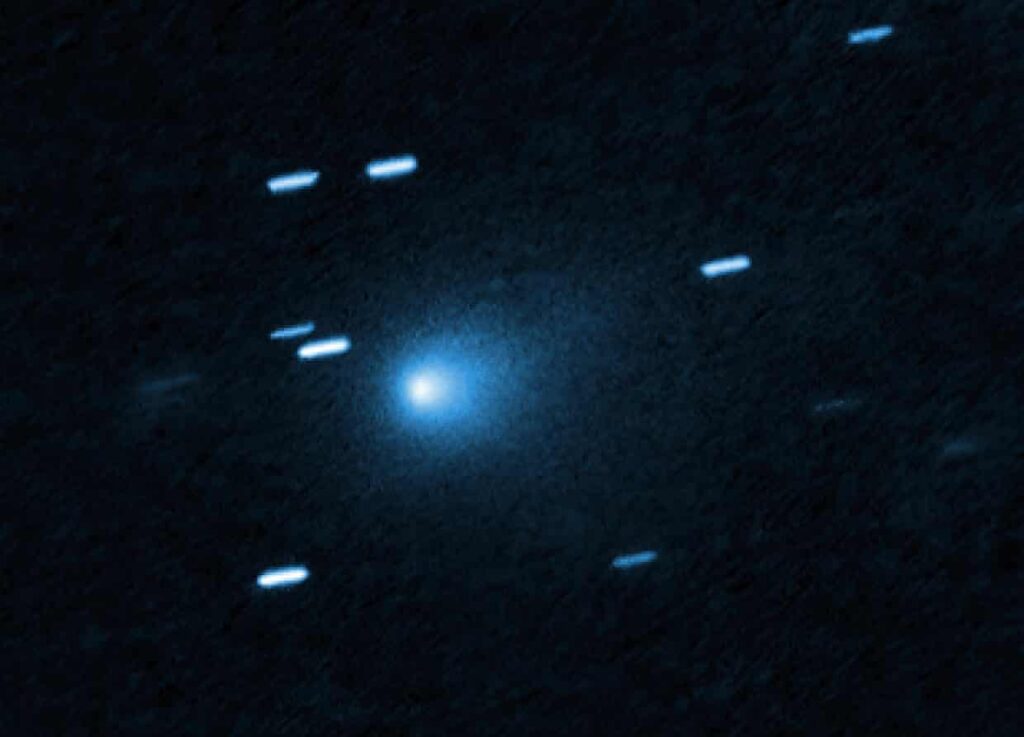
A comet from beyond our solar system, designated as 3I/Atlas, is speeding towards the sun at approximately 61 km (38 miles) per second. Detected for the first time in July 2023, this remarkable object is only the third known interstellar entity observed, following ‘Oumuamua in 2017 and 2I/Borisov in 2019. The excitement surrounding 3I/Atlas has intensified since the Hubble Space Telescope captured its image, providing scientists a unique chance to study its size and chemical composition.
Understanding 3I/Atlas
Scientists remain uncertain about the origins of 3I/Atlas, but its classification as an interstellar object is clear. According to Dr. Laura Driessen, a radio astronomer at the University of Sydney, “We don’t know exactly where it came from, but it definitely came from outside the solar system.” The nomenclature “3I” signifies that it is the third interstellar object detected, while “Atlas” references the network of telescopes that first identified it, known as the Asteroid Terrestrial-impact Last Alert System.
While there has been speculation regarding its potential as an alien craft, experts lean toward the conclusion that 3I/Atlas is most likely a comet. “There’s no evidence to point towards [3I/Atlas] being anything other than a really fun space rock that came from outside the solar system,” Dr. Driessen adds. This sentiment echoes the previous discussions surrounding ‘Oumuamua, which astronomers examined for potential radio signals, later confirming it was not of artificial origin.
Scientific Significance and Expected Trajectory
The Hubble image of 3I/Atlas reveals a “fuzzy snowball” appearance, primarily due to its coma, which forms as the comet’s surface heats up when approaching the sun, releasing dust and gas. Notably, there are indications of a comet tail. As Dr. Rebecca Allen, co-director of Swinburne University’s Space Technology and Industry Institute, explains, the chemical signatures from elements and molecules outside our solar system will become increasingly evident as the comet nears the sun. “We can use a tool called spectroscopy, and we can use light to actually understand exactly what that material is,” she says. This analysis could reveal whether 3I/Atlas originates from a solar system with conditions similar to our own or if it is entirely different.
Researchers have estimated the diameter of 3I/Atlas to be less than 5.6 km, possibly as small as 320 meters. The comet is on a hyperbolic trajectory, meaning it is not gravitationally bound to the sun. “It’s going to cruise through the inner solar system—in between Mars and Earth’s orbit—and then it will fly past the sun,” Dr. Allen elaborates.
Expected to make its closest approach to the sun between October and December 2023, 3I/Atlas will come within approximately 210 million kilometers. Its closest approach to Earth will be about 270 million kilometers. Con Stoitsis, the comet and meteor director at the Astronomical Society of Victoria, notes that the precise endpoint of its journey will remain uncertain until it rounds the sun and heads back toward the outer solar system.
Visibility and Public Interest
Currently faint, 3I/Atlas is anticipated to brighten as it approaches the sun, potentially allowing visibility through larger amateur telescopes. Even then, observers should expect a smudged appearance. “We get bright-ish comets three or four times a year that are visible with small telescopes and binoculars. This is definitely not one of those,” Stoitsis remarks. He advises that unless observers have access to a decent-sized telescope, the comet may remain elusive.
The scientific community eagerly awaits the continued trajectory and analysis of 3I/Atlas, marking a significant moment in the study of interstellar objects. As this comet travels through our solar system, it offers a unique glimpse into the mysteries beyond our celestial neighborhood.






